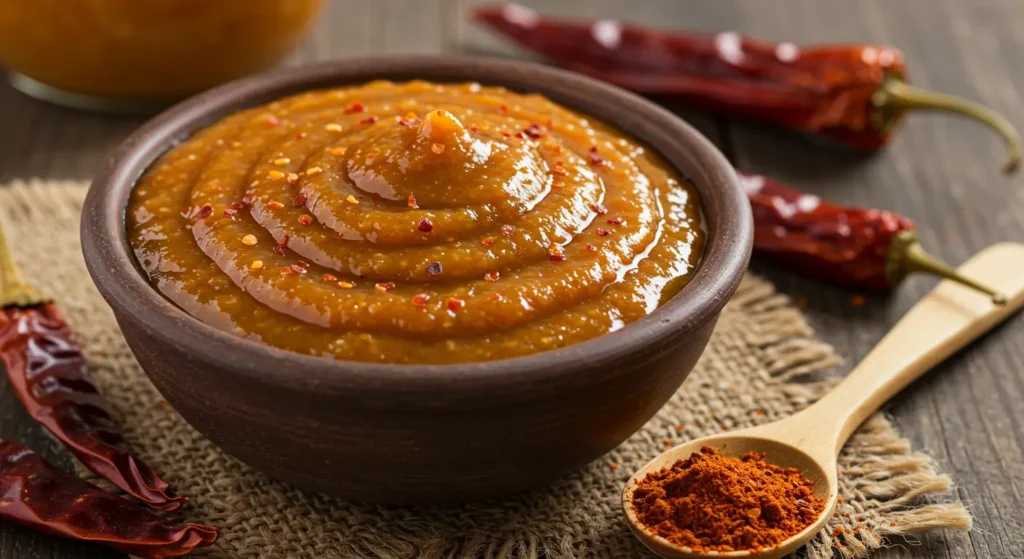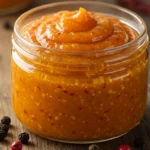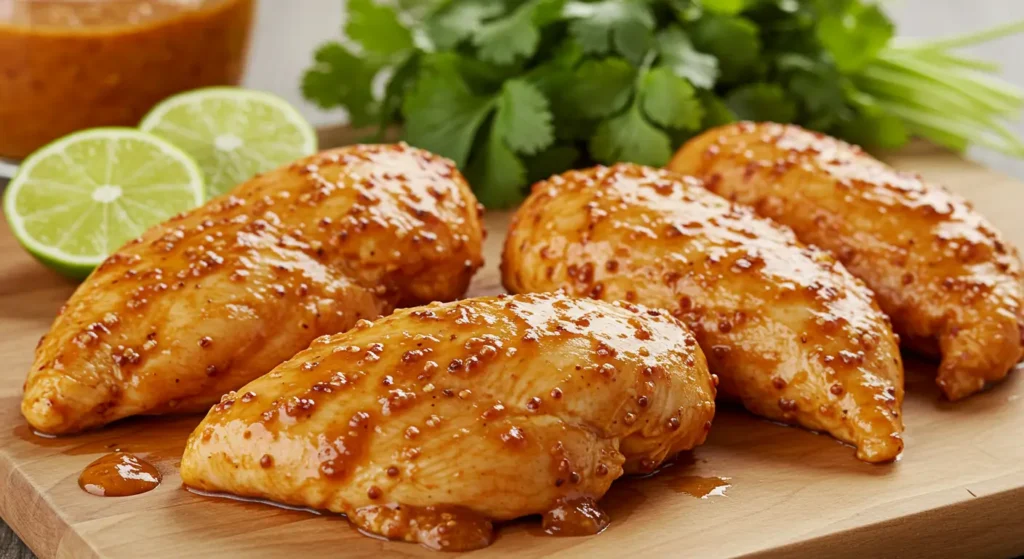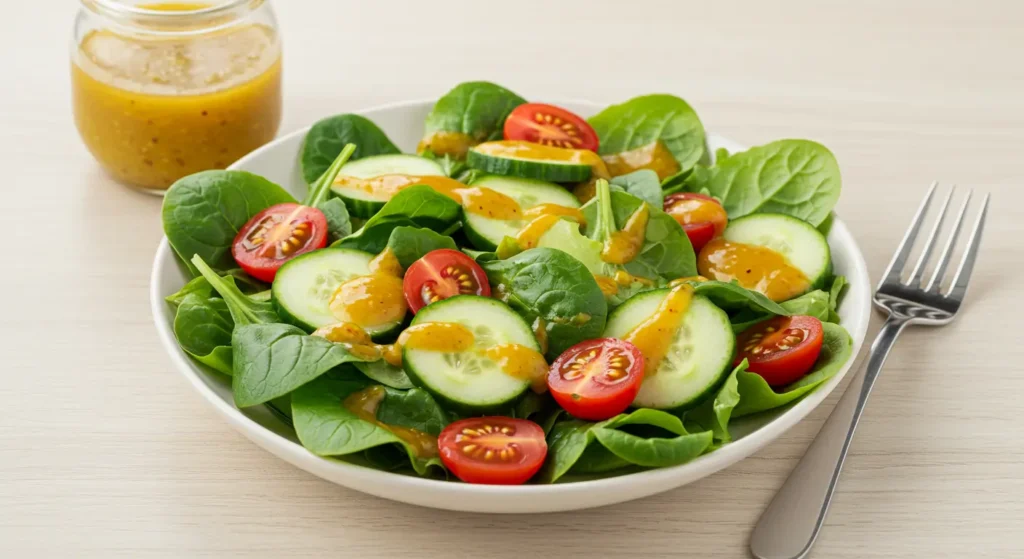Table of Contents
Introduction to Hot Pepper and Mustard Pairing
Hot pepper with mustard is a culinary pairing that offers a perfect balance of heat and tanginess. This dynamic duo has been celebrated in kitchens worldwide for its versatility and ability to transform ordinary dishes into bold, flavorful creations. Whether used as a marinade, sauce, or condiment, the mixture of hot peppers and mustard creates a unique flavor profile that is both sharp and spicy.
Hot peppers bring their fiery heat, thanks to capsaicin, the compound responsible for their spiciness. Depending on the type of pepper used—such as jalapeños, habaneros, or cayenne—the level of heat can be adjusted to suit various taste preferences. Mustard, on the other hand, contributes a tangy, slightly bitter flavor that complements the pepper’s spiciness. Together, they form a balance of flavors that is both exciting and satisfying.
This pairing isn’t just about flavor; it also has health benefits. Both ingredients are rich in antioxidants, vitamins, and minerals. Mustard seeds, for instance, are known for their anti-inflammatory properties, while hot peppers can boost metabolism and improve digestion. These benefits make the combination of hot pepper with mustard not only delicious but also nutritious.
As you explore this fusion, you’ll discover its versatility in different cuisines, from fiery BBQ sauces to tangy salad dressings. In the following sections, we’ll delve into the ways you can prepare and use this flavorful duo in your kitchen. Stay tuned to learn recipes, preparation tips, and how to customize the heat and tang to your liking.
Equipment Needed for Preparation
Below is a list of essential equipment needed for preparing this flavorful recipe:
- Cutting Board and Sharp Knife: For chopping hot peppers into precise pieces, a sturdy cutting board and a high-quality knife are essential. A sharp blade ensures clean cuts and prevents the peppers from being crushed, which can release excessive heat into the air.
- Protective Gloves: Hot peppers contain capsaicin, which can irritate the skin. Gloves are a must-have to protect your hands while handling peppers, especially when using varieties like habanero or ghost peppers.
- Blender or Food Processor: To achieve a smooth consistency for your hot pepper with mustard recipe, a blender or food processor is ideal. It helps combine the peppers, mustard, and other ingredients seamlessly.
- Mixing Bowls: Use these for combining and stirring the ingredients before blending. Opt for glass or stainless steel bowls to avoid staining or absorbing odors.
- Measuring Cups and Spoons: Precise measurements are key to balancing the heat and tang in your recipe. Ensure you have a full set of measuring tools for accuracy.
- Sterilized Jars or Containers: If you plan to store your hot pepper and mustard mixture, sterilized jars are essential for preserving freshness and preventing contamination. Choose airtight containers for the best results.
- Saucepan: Some recipes require simmering the mixture to deepen the flavors or reduce its consistency. A medium-sized saucepan is perfect for this step.
By gathering these tools before starting your recipe, you’ll streamline the preparation process and ensure that every step is executed efficiently. With your equipment ready, you’re one step closer to crafting the perfect hot pepper with mustard recipe.
Key Ingredients
To create the perfect hot pepper with mustard recipe, selecting the right ingredients is crucial. The combination of spicy, tangy, and aromatic elements brings this recipe to life, offering a bold and flavorful experience. Below is a breakdown of the essential ingredients:
- Hot Peppers: The foundation of this recipe, hot peppers provide the heat and depth of flavor. Choose from varieties like jalapeños for mild heat, habaneros for a fruity punch, or cayenne for a classic kick. For adventurous cooks, ghost peppers or Carolina reapers can be used for intense spice.
- Mustard: Mustard serves as the tangy base that balances the fiery heat of the peppers. Use yellow mustard for a milder flavor, Dijon for a smooth and sophisticated taste, or whole-grain mustard for added texture.
- Vinegar: This ingredient is essential for preserving the mixture and enhancing its tanginess. White vinegar is a common choice, but apple cider vinegar adds a subtle sweetness that pairs well with peppers.
- Honey or Sugar: To offset the spice, a touch of sweetness is necessary. Honey, brown sugar, or granulated sugar can be used, depending on your preference.
- Garlic: Fresh garlic cloves add depth and a savory undertone to the recipe. Mince or crush the garlic for maximum flavor release.
- Salt: A small amount of salt enhances the overall flavor profile, balancing the sweetness, tanginess, and heat.
- Spices: Optional spices like turmeric, smoked paprika, or cumin can be added to customize the flavor. These spices add complexity and complement the primary ingredients.
Additional Optional Ingredients
- Onions: For a sweeter and aromatic touch.
- Olive Oil: To create a smoother texture and enhance richness.
- Herbs: Fresh herbs like cilantro or parsley can add a burst of freshness.
By carefully selecting and combining these ingredients, you can create a hot pepper with mustard recipe that suits your taste preferences while delivering an unforgettable burst of flavor.
Step-by-Step Preparation of Hot Pepper with Mustard Recipe
Making a hot pepper with mustard recipe is a straightforward process that combines bold flavors with simple techniques. Follow these steps to create a perfectly balanced mixture of heat and tang:
1. Gather Your Ingredients and Tools
Before starting, assemble all the necessary ingredients and equipment. Ensure your hot peppers, mustard, garlic, and spices are fresh for the best results. Wear gloves while handling hot peppers to avoid skin irritation.
2. Prepare the Hot Peppers
- Wash the peppers thoroughly under running water to remove any dirt or debris.
- Slice off the stems and cut the peppers into smaller pieces for easier blending. If you prefer less heat, remove the seeds and membranes.
3. Prepare Additional Ingredients
- Mince the garlic cloves and measure the mustard, vinegar, and any optional spices you want to include.
- If using onions or herbs, chop them finely to ensure they blend well with the mixture.
4. Blend the Ingredients
- Place the chopped hot peppers, mustard, vinegar, garlic, and a pinch of salt into a blender or food processor.
- Add honey or sugar if you prefer a slightly sweet balance.
- Blend until the mixture reaches your desired consistency—smooth for a sauce or slightly chunky for a relish-like texture.
5. Simmer the Mixture (Optional)
- For deeper flavors, transfer the blended mixture to a saucepan.
- Cook on medium heat for 10 to 15 minutes, stirring from time to time. This step helps meld the flavors and thicken the consistency.
6. Taste and Adjust Seasonings
- Once the mixture has cooled slightly, taste it and adjust the seasoning. Add more salt, vinegar, or sweetener as needed to balance the flavors.
7. Store the Mixture
- Transfer the finished hot pepper with mustard recipe into sterilized jars or airtight containers.
- Allow it to cool completely before sealing. Store in the refrigerator for up to two weeks, or process the jars for longer shelf life.
8. Serve and Enjoy
- Use this spicy and tangy mixture as a condiment, marinade, or dipping sauce. It pairs perfectly with grilled meats, roasted vegetables, and sandwiches.
By following these steps, you’ll create a versatile and flavorful hot pepper with mustard recipe that can be customized to suit any dish or occasion.
Variations of the Recipe

The beauty of a hot pepper with mustard recipe lies in its versatility. With a few tweaks to the ingredients and preparation methods, you can craft variations to suit different tastes and cuisines. Below are some popular ways to modify the recipe while retaining its bold flavor:
1. Sweet and Spicy Variation
This version balances the heat of hot peppers with a touch of sweetness, perfect for those who enjoy milder spice levels.
- Use milder peppers like banana or poblano peppers.
- Add extra honey, brown sugar, or maple syrup to enhance the sweetness.
- Incorporate a hint of cinnamon or nutmeg for a warm, aromatic twist.
This variation pairs well with roasted vegetables and serves as a glaze for baked chicken or grilled tofu.
2. Smoky Mustard and Pepper Mix
A smoky variation enhances the recipe with deep, earthy flavors.
- Use smoked paprika or chipotle peppers for their smoky essence.
- Substitute regular mustard with Dijon or whole-grain mustard for added texture and complexity.
- Add a dash of liquid smoke to intensify the flavor.
This variation is perfect as a BBQ sauce or a dip for grilled vegetables.
3. Tangy and Zesty Recipe
If you enjoy a sharper tang, this version focuses on bold acidity and citrusy notes.
- Increase the amount of vinegar in the recipe, using apple cider or rice vinegar for unique flavors.
- Add fresh lemon or lime juice for an extra burst of zest.
- Mix in finely grated citrus zest for added aroma and flavor depth.
This variation works well as a salad dressing or marinade for seafood.
4. Extra Hot and Fiery Blend
For spice enthusiasts, this variation cranks up the heat.
- Use the hottest peppers available, such as habaneros, ghost peppers, or Carolina reapers.
- Avoid removing the seeds and membranes to retain maximum heat.
- Add cayenne pepper or red chili flakes for an additional layer of spiciness.
This fiery blend is ideal for chili lovers and as a topping for tacos or burritos.
5. Herb-Infused Variation
Herbs can add a fresh and unique touch to the traditional recipe.
- Mix in chopped fresh herbs like cilantro, parsley, or basil during the blending process.
- For an earthy flavor, add dried thyme, oregano, or rosemary.
- Use herb-infused olive oil instead of plain oil to enhance the aroma.
This version is a great accompaniment to roasted vegetables and Mediterranean dishes.
6. Asian-Inspired Hot Pepper and Mustard Sauce
This variation introduces umami-rich flavors to the recipe.
- Add soy sauce or tamari for saltiness.
- Incorporate grated ginger and a dash of sesame oil for an Asian flair.
- Sweeten with a touch of honey or hoisin sauce.
Serve this as a dipping sauce for dumplings or drizzle it over stir-fried noodles.
By experimenting with these variations, you can create a hot pepper with mustard recipe tailored to any occasion or preference. Whether you like it sweet, smoky, or fiery, there’s a version for everyone to enjoy.e. Whether you like it sweet, smoky, or fiery, there’s a version for everyone to enjoy.
Health Benefits of Hot Peppers and Mustard
The combination of hot pepper with mustard is not only a treat for the taste buds but also packed with health-boosting properties. Each ingredient contributes its own set of nutrients and compounds that promote well-being. Below are some of the most notable health benefits of this fiery and tangy duo:
1. Rich in Antioxidants
Both hot peppers and mustard are excellent sources of antioxidants.
- Hot peppers contain capsaicin, a powerful compound that neutralizes harmful free radicals in the body. This helps lower oxidative stress, a factor associated with aging and various long-term illnesses.
- Mustard seeds are rich in selenium and isothiocyanates, which also act as antioxidants, supporting cellular health and reducing inflammation.
2. Boosts Metabolism
Capsaicin in hot peppers is known to increase metabolic rate.
- It promotes thermogenesis, a process where the body burns calories to produce heat. This may aid in weight management when combined with a balanced diet.
- Mustard, particularly its seeds, has been linked to improved digestion and metabolism due to its fiber content and enzymes.
3. Supports Heart Health
The combination of hot pepper with mustard may improve cardiovascular health.
- Capsaicin helps reduce bad cholesterol (LDL) levels while increasing good cholesterol (HDL). It also improves blood flow and reduces inflammation in blood vessels.
- Mustard contains omega-3 fatty acids and magnesium, which support healthy blood pressure and prevent arterial stiffness.
4. Anti-Inflammatory Properties
Chronic inflammation is a common factor in many diseases, including arthritis and diabetes.
- Hot peppers’ capsaicin has natural anti-inflammatory effects, helping to reduce joint pain and swelling.
- Mustard seeds contain selenium and magnesium, which are effective in reducing inflammation throughout the body.
5. Aids Digestion
This pairing can stimulate the digestive system, promoting better gut health.
- Hot peppers enhance digestion by stimulating the production of stomach acids and improving nutrient absorption.
- Mustard seeds contain enzymes that break down food more efficiently, reducing bloating and indigestion.
6. Immune System Booster
Both ingredients are packed with vitamins and minerals that strengthen the immune system.
- Hot peppers are rich in vitamin C, a key nutrient for immune defense.
- Mustard seeds provide essential minerals like zinc, iron, and manganese, which play a vital role in immune function.
7. May Reduce Pain
Capsaicin in hot peppers is often used in topical creams for pain relief. Consuming peppers may provide similar benefits by reducing pain perception. Mustard also contains compounds that improve circulation, which can alleviate muscle and joint pain.
Incorporating a hot pepper with mustard recipe into your meals allows you to enjoy these health benefits while savoring a burst of bold flavors. Whether you’re looking to boost your metabolism or enhance your immune system, this flavorful duo offers more than just culinary satisfaction.
For a heartier accompaniment to your hot pepper with mustard dishes, try this rich Southern cornbread recipe with beef tallow, which pairs beautifully with spicy and tangy sauces.
Print
Hot Pepper with Mustard Recipe
- Total Time: 10 minutes
- Yield: 1/2 cup (serves approximately 6-8 people)
- Diet: Vegetarian
Description
This hot pepper with mustard recipe brings together the fiery heat of hot peppers with the tangy sharpness of mustard, creating a unique, bold flavor perfect for a variety of dishes. Whether used as a condiment, marinade, or salad dressing, this recipe will add spice and excitement to your meals.
Ingredients
- 1/2 cup Dijon mustard
- 2 tablespoons hot pepper paste or finely chopped hot peppers (such as habanero, jalapeño, or serrano)
- 1 tablespoon honey (for sweetness)
- 2 tablespoons vinegar (apple cider or rice vinegar)
- 1 tablespoon olive oil
- 1 teaspoon smoked paprika (optional for smoky flavor)
- Salt to taste
- Freshly ground black pepper to taste
Instructions
- In a mixing bowl, combine the Dijon mustard and hot pepper paste (or finely chopped hot peppers).
- Add honey, vinegar, olive oil, smoked paprika (if using), salt, and pepper.
- Stir all ingredients together until the sauce is smooth and well-combined.
- Taste the sauce and adjust seasoning as needed (add more honey for sweetness or more peppers for heat).
- Store the sauce in an airtight jar and refrigerate for at least an hour to let the flavors meld together before using.
Notes
- For a milder version, use milder peppers like banana peppers or poblano peppers.
- Adjust the heat by adding more or fewer hot peppers based on your preference.
- This sauce can be stored in the fridge for up to a week.
- Can be used as a marinade for meats, a dip for snacks, or a dressing for salads.
- Prep Time: 10 minutes
- Cook Time: 0 minutes
- Category: Sauce
- Method: No-cook
- Cuisine: American
Nutrition
- Serving Size: 1 tablespoon
- Calories: 30 kcal
- Sugar: 3g
- Sodium: 100mg
- Fat: 2g
- Saturated Fat: 0g
- Unsaturated Fat: 2g
- Trans Fat: 0g
- Carbohydrates: 5g
- Fiber: 1g
- Protein: 1g
- Cholesterol: 0mg
Keywords: hot pepper mustard sauce, spicy mustard sauce, homemade hot pepper mustard, mustard hot sauce, tangy pepper mustard
Serving Suggestions
A hot pepper with mustard recipe can be used in a wide variety of dishes and settings, thanks to its adaptability. Whether you prefer it as a spicy condiment or a bold marinade, this tangy and fiery blend can easily elevate your meals in unique ways. Below are several serving suggestions to inspire your culinary creativity while adding extra flavor to your dishes.
1. As a Condiment
- Spread it generously on sandwiches and burgers for an extra kick. The heat and tanginess naturally pair exceptionally well with grilled meats, crispy veggies, and soft bread.
- Furthermore, use it as a dip for snacks like pretzels, crackers, or roasted vegetables. Its bold flavor effortlessly enhances simple snacks, transforming them into gourmet appetizers.
- Additionally, drizzle it liberally over vegetarian sausages or veggie burgers for a fiery twist on classic street food.
2. As a Marinade

- Coat chicken, beef, or plant-based proteins with this mixture before grilling or roasting. The mustard not only tenderizes the meat but also infuses it with spicy flavor.
- Moreover, use it as a base for marinating tofu or tempeh for a plant-based option. The bold flavor works remarkably well with neutral proteins.
- For seafood enthusiasts, add a splash of olive oil to the recipe and use it to marinate shrimp or salmon, resulting in a tangy, spicy glaze.
3. As a Sauce
- Toss it with roasted vegetables such as carrots, potatoes, or brussels sprouts for a bold and spicy side dish. Similarly, you can stir it into pasta or grain bowls for a tangy heat that complements creamy and savory flavors.
- Furthermore, drizzle it over grilled or steamed fish to create a zesty finish that beautifully enhances the natural flavors of the seafood.
4. As a Salad Dressing

- Thin the mixture with olive oil and vinegar to quickly create a spicy and tangy vinaigrette.
- Toss it with leafy greens, cucumbers, and cherry tomatoes for a bold and refreshing side salad that stands out.
- Alternatively, use it as a topping for grain salads like quinoa or couscous, adding both vibrant flavor and heat.
5. In Casseroles and Soups
- Stir a spoonful into stews, soups, or chili for an extra layer of spice and tanginess that deepens the flavor profile.
- On top of that, mix it into cheesy casseroles or baked dishes to give them added depth and richness.
6. With Breakfast Dishes
- Spread it on toast with avocado or eggs for a spicy start to your day. Similarly, add a dollop to omelets or frittatas to enhance their flavor with heat and tang.
- Moreover, use it as a dipping sauce for breakfast potatoes or roasted vegetables, creating a hearty and flavorful breakfast experience.
7. As a Gift Idea
Homemade hot pepper with mustard makes a unique and thoughtful gift for food enthusiasts. Package it in sterilized jars with custom labels, and share it during holidays, BBQs, or even as a hostess gift to impress your friends and family.
With so many ways to enjoy this flavorful blend, a hot pepper with mustard recipe naturally becomes a kitchen staple that adds excitement to any meal. By experimenting with these suggestions, you can easily discover how it perfectly complements your favorite dishes.
If you’re looking for a gluten-free snack to pair with your hot pepper with mustard recipe, check out this comprehensive guide on whether Popcorners are gluten-free, ensuring you have a perfect crunch to complement the bold flavors
